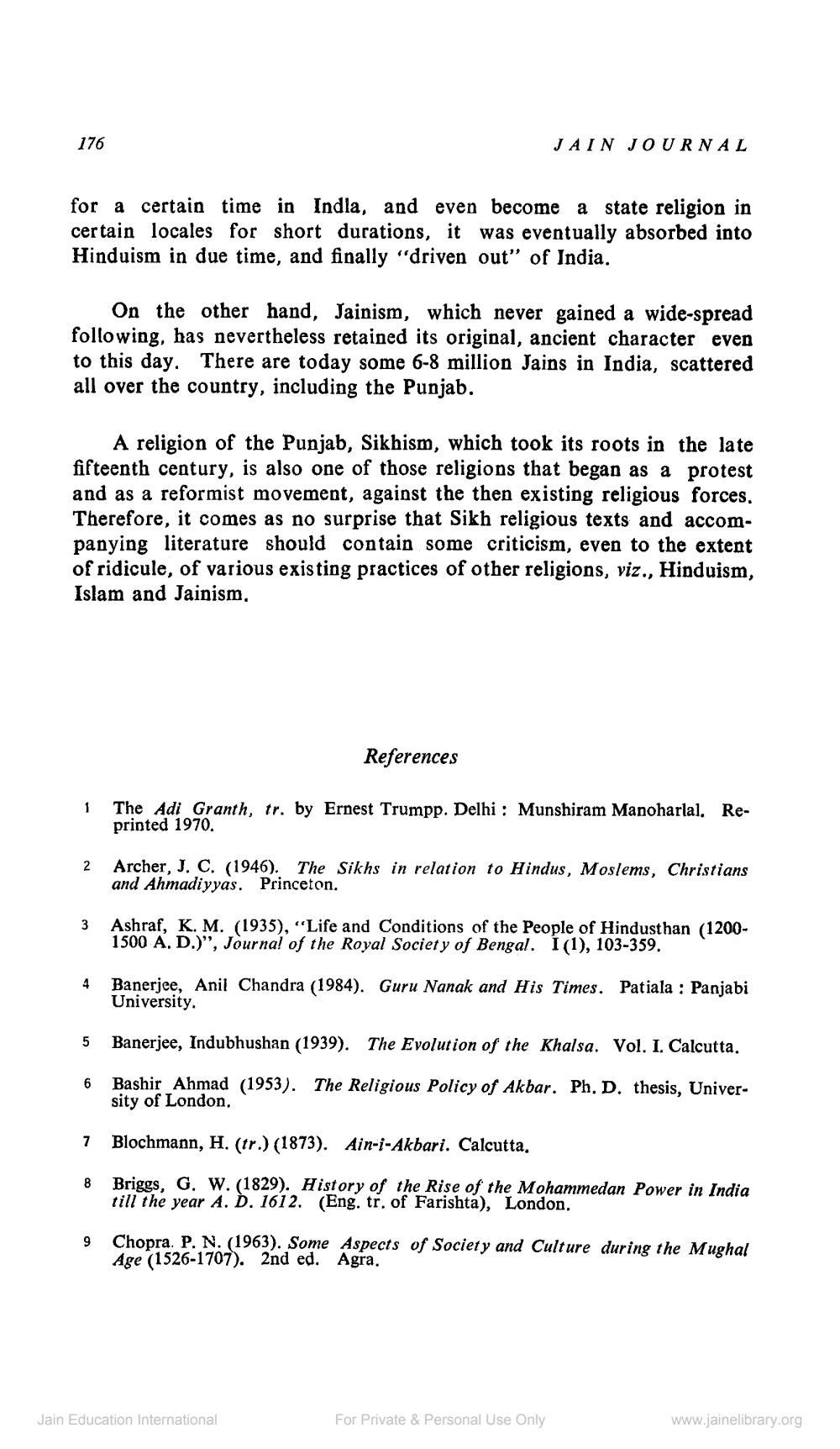________________
176
for a certain time in Indla, and even become a state religion in certain locales for short durations, it was eventually absorbed into Hinduism in due time, and finally "driven out" of India.
On the other hand, Jainism, which never gained a wide-spread following, has nevertheless retained its original, ancient character even to this day. There are today some 6-8 million Jains in India, scattered all over the country, including the Punjab.
A religion of the Punjab, Sikhism, which took its roots in the late fifteenth century, is also one of those religions that began as a protest and as a reformist movement, against the then existing religious forces. Therefore, it comes as no surprise that Sikh religious texts and accompanying literature should contain some criticism, even to the extent of ridicule, of various existing practices of other religions, viz., Hinduism, Islam and Jainism,
References
1 The Adi Granth, tr. by Ernest Trumpp. Delhi: Munshiram Manoharlal. Reprinted 1970.
2
3
JAIN JOURNAL
6
4 Banerjee, Anil Chandra (1984). Guru Nanak and His Times. Patiala: Panjabi University.
8
Archer, J. C. (1946). The Sikhs in relation to Hindus, Moslems, Christians and Ahmadiyyas. Princeton.
5 Banerjee, Indubhushan (1939). The Evolution of the Khalsa. Vol. I. Calcutta.
Bashir Ahmad (1953). The Religious Policy of Akbar. Ph. D. thesis, University of London.
7 Blochmann, H. (tr.) (1873). Ain-i-Akbari. Calcutta.
Briggs, G. W. (1829). History of the Rise of the Mohammedan Power in India till the year A. D. 1612. (Eng. tr. of Farishta), London.
9
Ashraf, K. M. (1935), "Life and Conditions of the People of Hindusthan (12001500 A. D.)", Journal of the Royal Society of Bengal. I(1), 103-359.
Chopra. P. N. (1963). Some Aspects of Society and Culture during the Mughal Age (1526-1707). 2nd ed. Agra.
Jain Education International
For Private & Personal Use Only
www.jainelibrary.org




